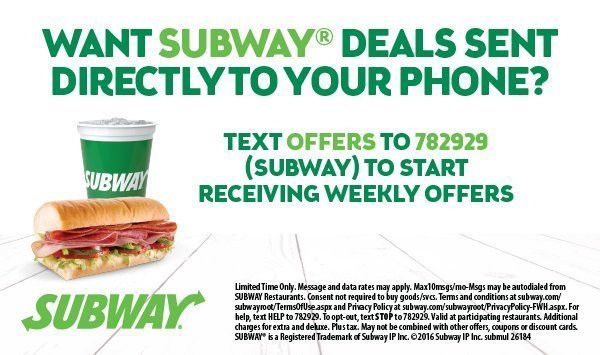In the world of SMS marketing, nailing the opt-in is critical for establishing your place in the lives of your audience. And choosing the right text opt-in services is even more important.
Unless you have a well-thought-out plan for approaching the opt-in and making sure your customers stay engaged with the program, atrophy will work against you and could offset the progress you have made. However, by using text opt-in best practices, you won’t have to worry about that happening.
Through this article, we will guide you through text opt-in best practices for creating an optimal campaign as well as the guidelines and laws put in place by the TCPA and CTIA.
Please note that these are best practices and should not be taken as legal advice. Make sure to consult with your attorney about the right opt-in practices for your business.
Considering that mass text marketing’s historical open rates are 3x that of email and 30x better than push notifications, optimizing your SMS campaign should be at the top of your priority list. Let’s get started.
TCPA Text Opt in Guidelines
The baseline for best practices of any text marketing campaign is to follow the rules put out under the TCPA or Telephone Consumer Protection Act. These laws were put in place to protect consumers from receiving spam and its part of the reason why SMS marketing is as effective as it is here in the U.S. and Europe.
TCPA guidelines stipulate that you must
- Receive consent before any message can be sent.
- Mention your company name
- Give the coupon or value proposition
- Mention the frequency of messages that will be sent monthly
- Disclose possible carrier costs and fees
- Give an option to ask for help and opt out of future texts
The first rule here is the most important. You are legally required to receive consent before any messages can be sent. This is why the opt in is not only vital to success, but mandatory and legally required. Use the opt in to get their consent and then focus on the rest so that you don’t lose them.
Before starting any text marketing campaign or even begin thinking about text opt in best practices, make sure that you are compliant with these guidelines.
Companies that forgo these guidelines can face fines anywhere from $500-$1500 per text message, so this is definitely something you don’t want to mess around with.
1. Follow the rules
In the spirit of Fight Club, our first two rules are the same: follow the rules. However, this should tell you how serious this is, not just to us, but the federal government.
When someone asks to join your text marketing campaign, you will send them the SMS opt in message. This is fairly standard, but to give you an example, it will look something like this:
Please reply YES to receive updates from Example Company. Std. msg&data rates apply. Reply HELP for help, STOP to cancel.

Right away, you are establishing consent by having them reply YES while getting the legal talk out of the way and providing them with further options.
This is a fairly standard message, so there isn’t a lot of creativity that goes into. However, you can start to define the campaign for them in this message and state your intentions.
Double Opt In
The double opt in, meaning someone asks to join your campaign and then you reconfirm with the first message, is the best way to stay within the rules and establish a professional relationship with your audience.
Again, since the opt in is a legally required aspect of your SMS marketing campaign, it bears repeating. In fact, some businesses include a double opt in even if their members already give their consent through a web form.
This not only covers you from legal repercussions, but it’s a simple best practice that is absolutely worth the time.
2. Be clear about your intentions
Have you ever signed up for a newsletter, expecting a message every couple of weeks and instead began receiving one almost every day? Annoying, right?
The same thing can happen with SMS marketing unless you are upfront about your intentions. This text opt in best practice is a simply tweak, but it can be a life saver.
Let’s take a look at that first text we sent again. This is actually an opportunity for you to establish with your audience the frequency of your messages. For example:
Please reply YES to receive updates from Example Company. Std. msg&data rates apply. Approx 5 msg/month. Reply HELP for help, STOP to cancel.
Right from the get-go, you tell them to expect 5 messages per month. How you space these out is another text opt in best practice we will review shortly, but establishing this from the opt in will help retain subscribers
3. Offer an incentive right off the bat
Once you go through the process of receiving consent for an opt in, there are a few text opt in best practices for sticking the landing.
One best practice is to offer an incentive right off the bat. Think of it as a way of saying thank you. For instance, if someone replies YES to your campaign, you can send them a message like this:
Thank you for subscribing to Example Company’s Text Reminders! Use offer code SAVINGS for 20% off your next purchase.

Right away you are cementing the relationship and showing the value of the text marketing program. Now, customers will not only be more receptive to your messaging, but they might even look forward to it.
4. Choose the right short code
So far, these text opt in best practices have mainly focused on what happens after a customer finds out about your SMS campaign and tries to join.
On the opposite side of that, short codes can be used to entice users to your campaign with an easy to remember, 5-6 digit phone number. While some companies try to go the old-school route of having their number spell something, most just choose an easily remember combination.
Like Redbox, who has a call to action that simply reads:
Text SIGNUP to 727272.

Not a very difficult number to remember, right? Just like with UX design in software development, the easier you make the process, the more people are likely to follow through until the end.
5. K-I-S-S
This brings us to our next text opt in best practice known as K-I-S-S, or Keep It Short and Simple. Consumers value SMS marketing due to the fact that it is often quick and painless.
When you start to blow up their inbox with lengthy messages is when you will begin to lose them. Especially now when MMS is available and links can be included in the message.
For instance, instead of writing something like:
Example Company: Hey there! Did you know that you can save 20% this weekend when you shop in our stores? Don’t forget to mention our texting campaign at the register!
You could follow the K-I-S-S rule and write something like this:
Example Company: Save 20% off this weekend! Show them this message or go to Example.com/offer for more details.
As you can see, this conveys the same point, but in a much simpler fashion that will likely lead to higher conversions.
6. Use keywords that compliment your brand
Although it may not make sense to try and create a short code that spells something out, text marketing keywords are another story. These keywords are what customers will use to reply to you and trigger automated responses.
For instance, STOP and HELP are included in almost every text marketing campaign. However, you can create branded keywords that make things easy for your customers. For example:
Text WORKOUT to 55555 for more information on gym membership.

Since the keyword is in line with the information you hope to receive, your audience will have an easier time getting started.
This is just one example, but some text opt in best practices here that you should follow include keeping it less than roughly 7-8 letters and making sure it isn’t close to another keyword you are already using.
This will make sure your audience doesn’t become confused or frustrated.
7. Measure everything
Another text opt in best practice that almost goes without saying in our data driven market is to measure everything.
Although you may be able to set up most of your texting campaign when you first get started, creating an exceptional process takes time and maintenance throughout. By measuring your results, you can perform A/B testing and hone your craft.
For instance, this text message:
Example Company: Thanks for subscribing! Find more info at Example.com
Might perform better than this message:
Example Company: Thank you for subscribing! Be sure to check out our website for more info.
Even though they are almost the same. Without the right tools for measuring this, you wouldn’t ever know. Make sure that whichever text marketing software you are using allows you to track user engagement metrics. These will be invaluable to you and your business moving forward.
8. Always provide a way out
Our final text opt in best practice actually has to do with opting out. Under the TCPA, subscribers must always have an easy way out. You can even see this in the first example message we went over.
Please reply YES to receive updates from Example Company. Std. msg&data rates apply. Approx 5 msg/month. Reply HELP for help, STOP to cancel.
That part at the end, “STOP to cancel,” is important. Even your most dedicated subscribers like to know that they have a way out if they need it. Make sure you include this in regular messages so that your subscribers don’t feel as if you are trying to work one over on them.
Opt-In Text Messages: 5 Strategic Tips
- Make opting in easy
Sending an opt-in text is your first step. But your customer’s first step is opting in– this process should be quick and seamless. An easy way to let customers opt-in for SMS campaign messages is by allowing them to check a box when they provide their phone number to you.
- Keep compliance in mind
If you’re not compliant – your business can be fined heavily. So ensure your automated text messages are sent with regulations from the Telephone Consumer Protection Act (TCPA) in mind. Your first text to a customer should always include necessary business, promotional, and cost information. These points can be found in the TCPA guidelines (as discussed earlier).
- Stay on brand
Communicating your brand voice and personality over text can be challenging. But try to keep your brand consistent throughout these opt-in texts. It will help customers build a perception of you and become closer to your brand. So, if you’re a casual brand, stick with that style in your texts. If you’re formal – the same goes.
- Use simple and clear language
Opt-in texts should be simple and to the point. That being said, it’s important to be very clear in your message. Don’t ramble, and get to the point as quickly as possible. Also, avoid using jargon, slang, or abbreviations. If you do, ensure your customers understand them.
- Keep it short and sweet
When you look at most SMS marketing examples, you’ll notice that they’re short and sweet. It’s crucial to follow this rule of thumb. Don’t share multiple messages in one text – stick to one topic at a time. Have a clear CTA, and don’t go over 160 characters if possible.
Final thoughts
As you can see, while text marketing may seem to be a simply process from the outside, there is a lot of thought and time that goes into creating an exceptional SMS campaign.
Each of these text opt in best practices should be used in combination with each other in order to maximize your chances and truly create an exceptional customer experience.
Get the full story here:



